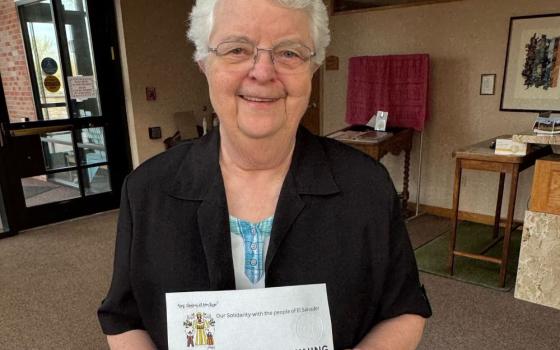I’m a veteran of conferences on church reform. I started out at the first Women’s Ordination Conference in 1975, attended the original Call to Action (the one the U.S. Bishops called in 1976) and participated in numerous Call to Action and Women’s Conferences since then. I’ve even attended a couple in Europe, including the 8th of May Movement in the Netherlands.
So, the American Catholic Council meeting in Detroit this past weekend (June 10-12) was of great interest to me. I was especially interested in signs of change and maturing in the movement. Here’s what I sensed and observed:
- The issue of women’s ordination, and gender equality generally, has risen to a new level of prominence on the roster of reform. It is at the top of many reformers’ lists -- men as well as women. It’s clear as never before: the denial of women’s equality just makes no sense to most Catholics anymore, especially these Catholics.
- The issue of gay and lesbian rights has become mainstream in the movement, just as in society at large. It’s not a “fringe” issue for Dignity or New Ways Ministry; it’s everybody’s issue. And of course, over the years, Call to Action has had a lot to do with that.
- New and independent communities are flowering as never before. If the Church is a garden, new sprouts are proliferating. There have always been tall trees and shrubs (cathedral and parish communities) in the church. But now, there are new flowerings: intentional communities -- lots of them, the communities of the Roman Catholic Women Priests’ movement, the “Ecumenical” and “American” Catholic churches and dioceses, even new religious orders like Green Mountain Monastery in Vermont. Most of these are outside the purview of the hierarchy.
- The “priesthood of the faithful” was visible. When the celebrant at the Pentecost Sunday mass said the words of consecration, hundreds of people in the congregation chimed in without prodding or instructions in the program. Why? I suspect that many do it routinely in their intentional communities, and they believe that they have the power, along with the priest, to call for the presence of Christ.
- There is something increasingly “American” about this movement. The leaders of the conference formulated a “Catholic Bill of Rights and Responsibilities” modeled on our own Bill of Rights. The whole crowd affirmed it.
- Nobody expects that the world of Catholic “officialdom” will change soon, maybe not even in their lifetimes. Common comments about the hierarchy or bishops included: “Can it get any worse?” “Do you think they know how ridiculous they look?” “When will they leave the Middle Ages behind?”
- No one feels guilty about working for reform. If anyone worried about what the hierarchy would say in response to this meeting, it was not in evidence. “Excommunication... what’s that?”
A couple things other things to note:
- This was a “graying” crowd: the “Vatican II generation” still hoping to fulfill the promise of that Council. There was surely outreach to the young, but both Call to Action and the Women’s Ordination Conference have had more success in attracting youth.
- It was a very “white” crowd, and the major speakers -- with the exception of Jeanette Rodriquez -- were white and Anglo. I know the organizers tried to attract people of color, but Call to Action conferences definitely exhibit greater diversity.
- Barring some re-appearance of Christ on earth, no one expects the hierarchy to change course any time soon. Meanwhile, new communities grow and create what is essentially a small parallel church. How all this will ultimately play out only God knows.



